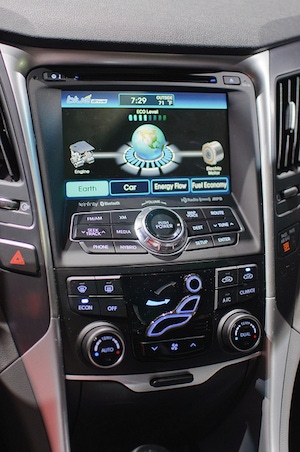In the years to come, suppliers will form partnerships to better serve OEMs and achieve the innovative, connected cars of the future. “We’re a plastics company, but in order for us to do the in-mold electronics, we have to partner with electronics companies,” said Marshall Paterson, Vice President, New Product Development, at Advanced Decorative Systems.
December 9, 2016

As vehicles become more computerized and contain increasingly more electronic systems, the demand for in-mold electronics technology will become greater. According to Marshall Paterson, Vice President, New Product Development, at Advanced Decorative Systems (ADS; Millington, MI), in-molded electronics are one way that automakers are accommodating the many electronic components.
|
Image courtesy InSapphoWeTrust/flickr. |
“You have to find innovative ways to interface with the electronics in the vehicle as we continue to see more and more systems being added,” Paterson told PlasticsToday after his recent presentation on this topic at the IMLCON/IMDCON in Rosemont, IL. “In some ways, the cockpit of a modern vehicle is becoming almost as complex as the cockpit of an aircraft. The cockpit of the car has become crowded, and the driver often becomes intimated by all of this technology.”
Paterson explained that there is a push toward creating innovative ways to interface all the various electronic systems and incorporate touch screens. The fact that the touch screen, which contains the menu for the various operations, is flat is a design and aesthetic concern for some stylists, Paterson noted. Many consumers prefer conventional knobs because they don’t want to have to search for the menu on the touch screen.
“Customers are looking for innovative ways to house the touch screen and give it a more organic appearance,” said Paterson. “There are certain functions in the vehicle that will never be relegated to the touch screen because consumers don’t want to be searching for the menu to adjust the volume, for example. The other function is the horn. Things like that will always be standalone buttons, and the touch screens themselves will be embedded in the instrument panel.”
Minimalism is an objective embraced by product designers to make the interior less threatening. ADS addresses this by harnessing its backlit technology, which allows the control functions to only appear when the driver needs them.
As more plastic is used in vehicle interiors, ADS, a global Tier 2 supplier that offers a variety of decorative technologies, including injection molding and thermoforming, can accommodate designers who are looking for materials, such as metal and wood, with a more organic appearance. Plastic allows this flexibility. “Interior components that were previously metal can now be made with plastic to look like metal, and the same is true of wood,” said Paterson. “Years ago, plastic made to look like wood really looked like plastic, but today it looks and feels like real wood. The same is true for metal, since some of the inks we print with are metallic in nature. We also mold components in piano black—a very high-end look that mimics glass. That desire to look like real materials, rather than plastic, is driving a lot of our technological innovation.”
Paterson said he believes that the most innovative things are still to come. He foresees an area on the console where you can lay down and inductively charge your cell phone. “That will be standard in vehicles in a few years,” he mused. “Proximity sensors are already in use. They detect your hand when you bring it close to the panel and the functions you want to see light up and then turn off when you move your hand away.”
Additionally, Paterson said there will be a change in the way automotive suppliers will operate. Suppliers will form partnerships to better serve OEMs in order to achieve the innovative, connected cars of the future. “We’re a plastics company, but in order for us to do the in-mold electronics, we have to partner with electronics companies,” said Paterson. “This will be a fundamental shift in the way companies like ours do business as the market continues to develop and the complexity of the supply chain evolves. Working together will be the key to success, as we all bring something to the party.”
Read part one of this series by clicking here.
About the Author(s)
You May Also Like





